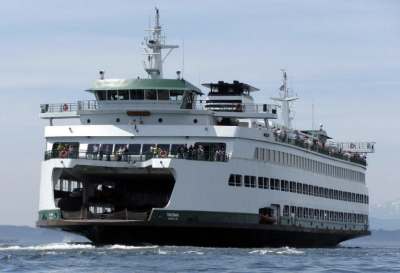Here are some oil and gas headlines over the last 36 hours:
- “Obama Administration to Offer Over 41 Million Acres in Central Gulf of Mexico Lease Sale”
- “Chevron’s Big Foot Sets Sail for the Gulf of Mexico”
- “U.S. Oil Prices at Six-Year Low on Storage Concerns”
If these headlines seem contradictory to you, join the crowd. With the price of oil (WTI) standing at just over $42 bbl., and with considerable downside potential left should Iran sanctions be lifted and/or crude exports approved by Congress, it’s hard to see how a lease sale is a good idea, or how a $6-billion-plus deepwater development can be profitable. That reasoning, of course, does not take into account the fact that we may be trapped by commitments made in better times.
But does that mean that we have to be trapped by those commitments? Yes and no. The "no" seems to apply to yesterday's Central Gulf lease sale. Up for grabs in Lease Sale 235, part of the 2012-2017 leasing program that has already offered 60 million acres in six previous sales, was 41.2 million acres offshore Louisiana, Mississippi and Alabama estimated to contain up to 890 million bbls. of producible oil and 3.9 Tcf of producible gas. The sale generated $529 million in high bids from 42 companies on 162 tracts, the worst figures in nearly 30 years of GOM lease sales.
Is this a valuable national resource? Absolutely. Was this the time to offer it for sale? Probably not. Could the sale have been rescheduled? Given the low oil and gas prices, it was a chancy proposition.
While the same might be said for Chevron’s Big Foot deepwater development, that statement would not reflect reality. The massive structure was committed to several years ago and took more than two years to construct. Considering the cost involved, the effort expended and the lease obligations that must be met, it is hard to argue that any options existed to halt the project in response to the price of oil.
In some version, the entire offshore industry faces this conundrum. Do we respond dramatically to the oil and gas price crisis, especially when it is apparent that there is no viable estimate of its duration? Or do we proceed, where possible, with plans made before the crisis matured? As in the situations above, there’s no answer that fits all circumstances. In those situations, however, where responses are viable, it would appear prudent that they be exercised, and sooner rather than later.
Appearances are deceptive, however. The nation has built a viable offshore industry on a basic framework that acts much like the chassis of a car. It underpins the operability of the vehicle. To tamper with it too vigorously is to invite long-term failure of the vehicle.




